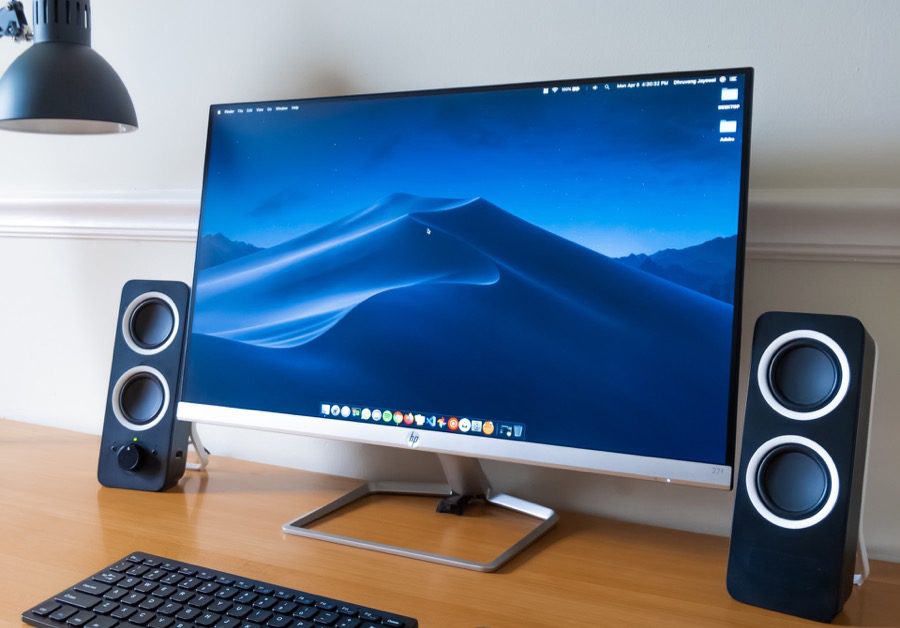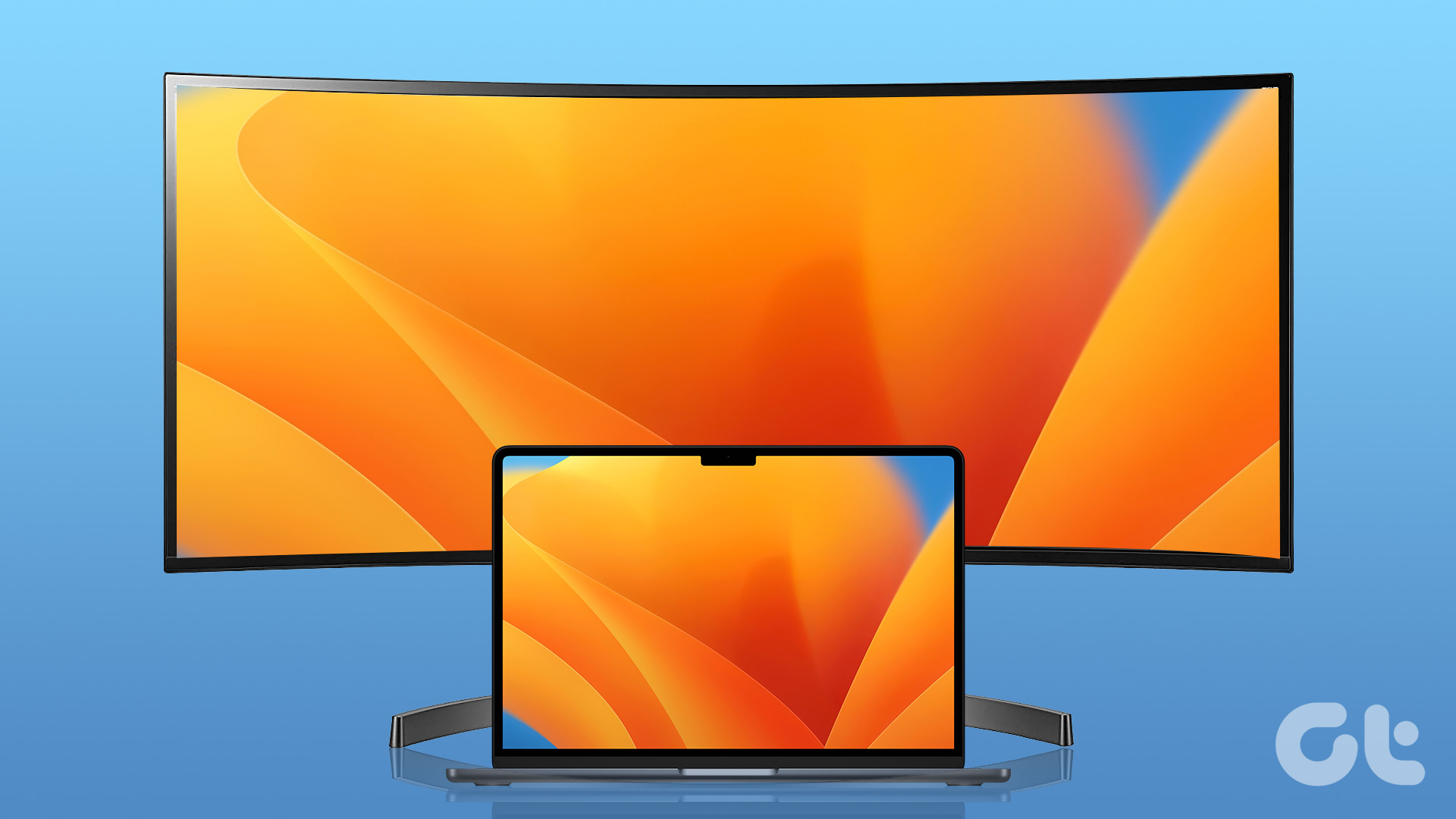If you want more display space, the obvious answer is to buy a monitor. Connect your laptop or PC to a monitor, and that’s about it. A bigger screen space not only gives you a clear view but also lets you multitask with ease. The real question is which setup is better for work—whether you should opt for a single ultrawide monitor or pick dual monitors.

Well, that’s what we will be discussing in this post today as we pit ultrawide monitors against dual monitors to see which setup is better suited for work.
Let’s get started. But before that,
- Here’s how to use multi-windows on Windows 11
- Here are the best wireless keyboards that you can buy
Screen Space: One Big space vs. Divided Space
Whether you use dual monitors or a single ultrawide one, the first thing you need to consider is the screen space or physical space. If you opt for an ultrawide monitor, you open your world to a single panel. The most common size for ultrawide displays is between 27-inches and 34-inches. And compared to a laptop’s screen or a single monitor’s screen, you’ll have ample display space. However, most ultrawide monitors have a thin aspect ratio, which means you may lose out on the horizontal space.

With ultrawide monitors rising in prominence, there are quite a few types to choose from. For instance, you can either pick a flat-screen or a curved monitor. And a curved monitor helps you have an immersive view.
On the other hand, a dual monitor rig means adjusting to the slight gap in between monitors. Even if they do not have a significant gap in between, the bezels do come in the way.

On the upside, you get a wide space to play with. As per the folks at the PC Mag, if you combine two 27-inches monitors, you get around 15.5-inches more in screen space than a single 34-inch ultrawide monitor.
Resolution
Apart from the screen space, another important area is the resolution. If you plan to move to the 4K resolution, there are several affordable 4K monitors under $500.
However, the situation is not the same for 4K ultrawide monitors. A good ultrawide monitor in 4K will cost you around $500-$600. For example, the LG 34WN80C-B costs around $550.
Again, the above point comes into the picture if your work requires 4K monitors. Needless to say, the cost comes down if you focus only on 2K or FHD monitors (like the LG 29WN600-W).
Multitasking
One of the main advantages of a dual monitor setup is multitasking. That is one of the aspects that many particularly love about dual monitors. Or, you can keep each monitor for specific tasks. For example, you can use one monitor for working, while other one for watching social media or YouTube videos. At the same time, the larger screen space means you can open several windows and snap them to the edges.

Secondly, you can change the orientation of the screens as per your requirement. For example, you can switch one of the screens to portrait mode (provided it allows) and keep the other one in landscape mode. The former allows you a more compact screen. And if you want it, you can snap the windows on top of the other, just like the multitasking mode of your smartphone.
And while you can do all the multitasking in an ultrawide monitor, it doesn’t afford you the same luxury as two dedicated screens. At max, you can open 2-3 windows together and switch between them.

However, if you have to open several windows and switch between them, you will have to resort to the age-old method of opening different desktops or views.
Desk Clutter and Cable Management
Interestingly, this is one field where an ultrawide monitor wins the game fair and square. Since it’s a single monitor, you will have to deal with a few cables. Furthermore, a single monitor stand occupies far less space, and you will have more room on the desk for yourself.
When it comes to a dual monitor setup, let me tell you that the entire setup occupies plenty of space on the table, which leads to clutter. And you will be staring at a cable mess unless the power cables and the display cables are properly arranged.

Thankfully, all these can be taken care of by a wall mount or monitor arm. They lift up the monitors and help you have a clear space on your table. However, this solution is slightly expensive.
Text Consistency and Height
When we say dual monitors, we automatically assume that both the monitors are of the same height and build. While it’s ideal, it’s not a hard and fast rule. But if you opt for a different build/make, you will have to make several adjustments.
For example, if one of the monitors is smaller, your eyes must constantly adjust to the different text sizes. While it may not look like a lot initially, these drawbacks matter in the long run, especially if your work involves working with text. The same is true if both the monitors are of different heights.

And when two monitors with different sizes come into the picture, you’ll have to dig into the display settings. To have a uniform experience, you will need to arrange the monitors accordingly. There’s Color Calibration option if you want both the screens to have the same color.

Of course, some of these limitations cease to exist if you get two screens of the same height and build. These limitations do not come into the picture f you opt for a single ultrawide monitor. You will have a single wall to work on without worrying about inconsistencies in height and text.
Expenses in Accessories
Two different monitors usually mean two different sets of accessories like headphone hangers, privacy films, or cable management accessories.
The Duel of Monitors
A single ultrawide monitor eases a lot of things. Not only do you have to worry less about arranging the display, but you also have to worry less about accessories. And unless you plan to game or use it for high-end video or photo editing, the aspect ratio and the resolution should not be a major concern.
The widescreen will give you plenty of screen real estate to run 2-3 windows side-by-side. And a monitor arm only seems an optional buy, unless you want your desk to be completely free.
On the other hand, a dual monitor system has pros and cons. While they give you a bigger screen space to work on, you will have to get used to the idea of two screens separated by a slight gap. Then, there’s the screen calibration and customization work. However, these are one-time work.
On the upside, standard monitors are inexpensive, and if you work mostly on docs and text-related things, a dual monitor rig is a good buy. Plus, if you want to multitask like a pro and switch between several open windows, two monitors connected to a single system will help you achieve your goal better (check out best frameless monitors for dual monitor setup).
Again, the above point comes into the picture if your work requires 4K monitors. Needless to say, the cost comes down if you focus only on 2K or FHD monitors (like the LG 29WN600-W).
Multitasking
One of the main advantages of a dual monitor setup is multitasking. That is one of the aspects that many particularly love about dual monitors. Or, you can keep each monitor for specific tasks. For example, you can use one monitor for working, while other one for watching social media or YouTube videos. At the same time, the larger screen space means you can open several windows and snap them to the edges.

Secondly, you can change the orientation of the screens as per your requirement. For example, you can switch one of the screens to portrait mode (provided it allows) and keep the other one in landscape mode. The former allows you a more compact screen. And if you want it, you can snap the windows on top of the other, just like the multitasking mode of your smartphone.
And while you can do all the multitasking in an ultrawide monitor, it doesn’t afford you the same luxury as two dedicated screens. At max, you can open 2-3 windows together and switch between them.

However, if you have to open several windows and switch between them, you will have to resort to the age-old method of opening different desktops or views.
Desk Clutter and Cable Management
Interestingly, this is one field where an ultrawide monitor wins the game fair and square. Since it’s a single monitor, you will have to deal with a few cables. Furthermore, a single monitor stand occupies far less space, and you will have more room on the desk for yourself.
When it comes to a dual monitor setup, let me tell you that the entire setup occupies plenty of space on the table, which leads to clutter. And you will be staring at a cable mess unless the power cables and the display cables are properly arranged.

Thankfully, all these can be taken care of by a wall mount or monitor arm. They lift up the monitors and help you have a clear space on your table. However, this solution is slightly expensive.
Text Consistency and Height
When we say dual monitors, we automatically assume that both the monitors are of the same height and build. While it’s ideal, it’s not a hard and fast rule. But if you opt for a different build/make, you will have to make several adjustments.
For example, if one of the monitors is smaller, your eyes must constantly adjust to the different text sizes. While it may not look like a lot initially, these drawbacks matter in the long run, especially if your work involves working with text. The same is true if both the monitors are of different heights.

And when two monitors with different sizes come into the picture, you’ll have to dig into the display settings. To have a uniform experience, you will need to arrange the monitors accordingly. There’s Color Calibration option if you want both the screens to have the same color.

Of course, some of these limitations cease to exist if you get two screens of the same height and build. These limitations do not come into the picture f you opt for a single ultrawide monitor. You will have a single wall to work on without worrying about inconsistencies in height and text.
Expenses in Accessories
Two different monitors usually mean two different sets of accessories like headphone hangers, privacy films, or cable management accessories.
The Duel of Monitors
A single ultrawide monitor eases a lot of things. Not only do you have to worry less about arranging the display, but you also have to worry less about accessories. And unless you plan to game or use it for high-end video or photo editing, the aspect ratio and the resolution should not be a major concern.
The widescreen will give you plenty of screen real estate to run 2-3 windows side-by-side. And a monitor arm only seems an optional buy, unless you want your desk to be completely free.
On the other hand, a dual monitor system has pros and cons. While they give you a bigger screen space to work on, you will have to get used to the idea of two screens separated by a slight gap. Then, there’s the screen calibration and customization work. However, these are one-time work.
On the upside, standard monitors are inexpensive, and if you work mostly on docs and text-related things, a dual monitor rig is a good buy. Plus, if you want to multitask like a pro and switch between several open windows, two monitors connected to a single system will help you achieve your goal better (check out best frameless monitors for dual monitor setup).
Last updated on 22 March, 2022
The above article may contain affiliate links which help support Guiding Tech. However, it does not affect our editorial integrity. The content remains unbiased and authentic.











